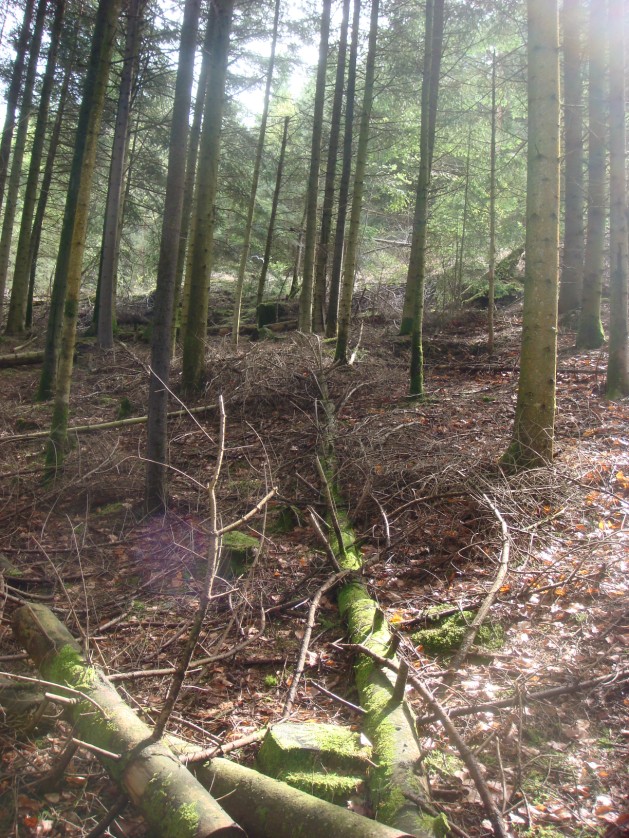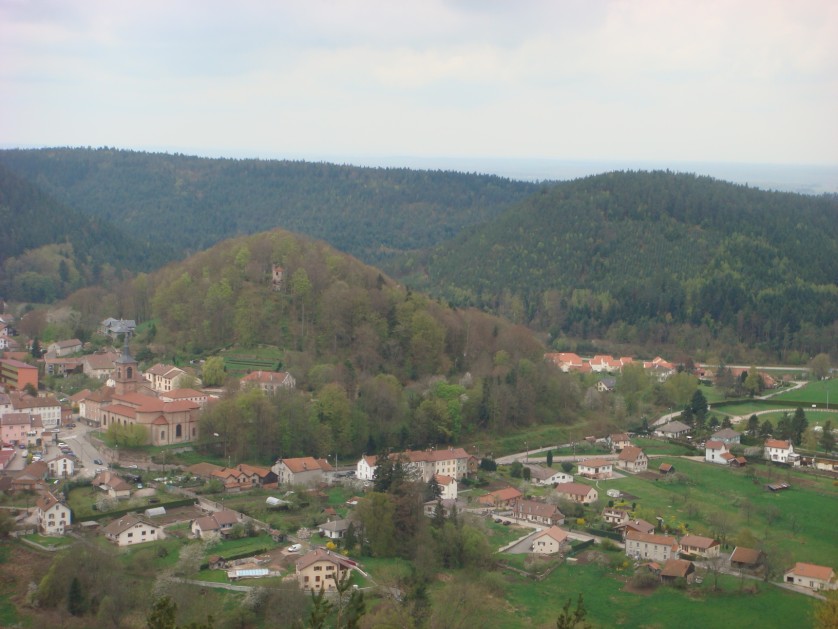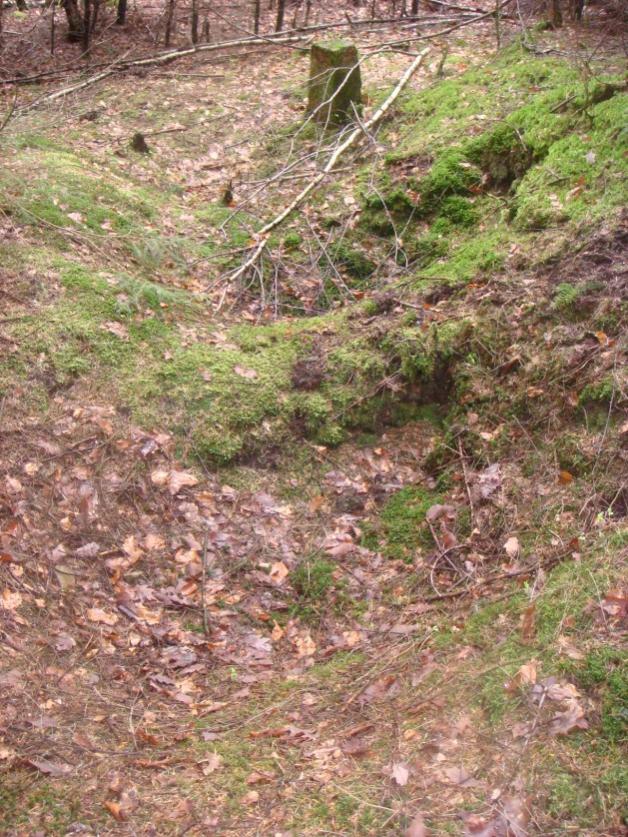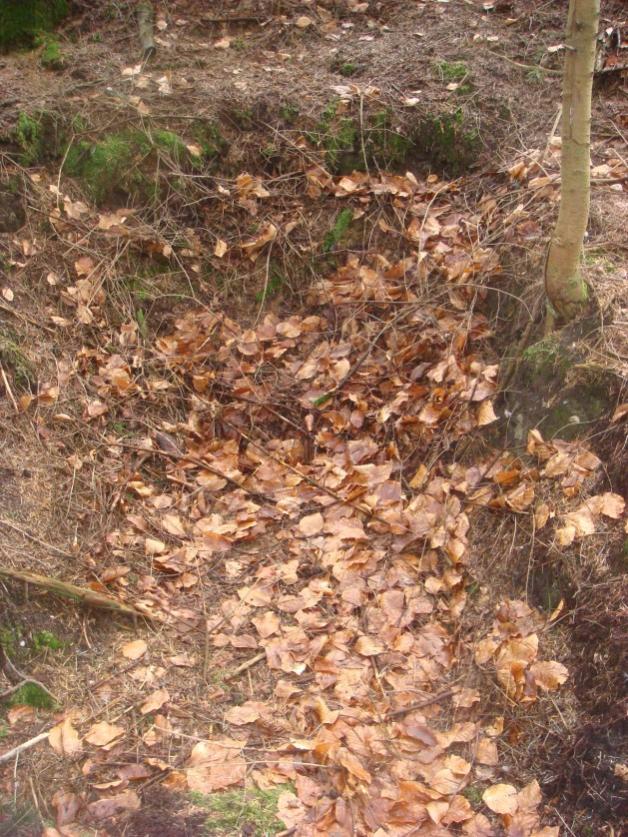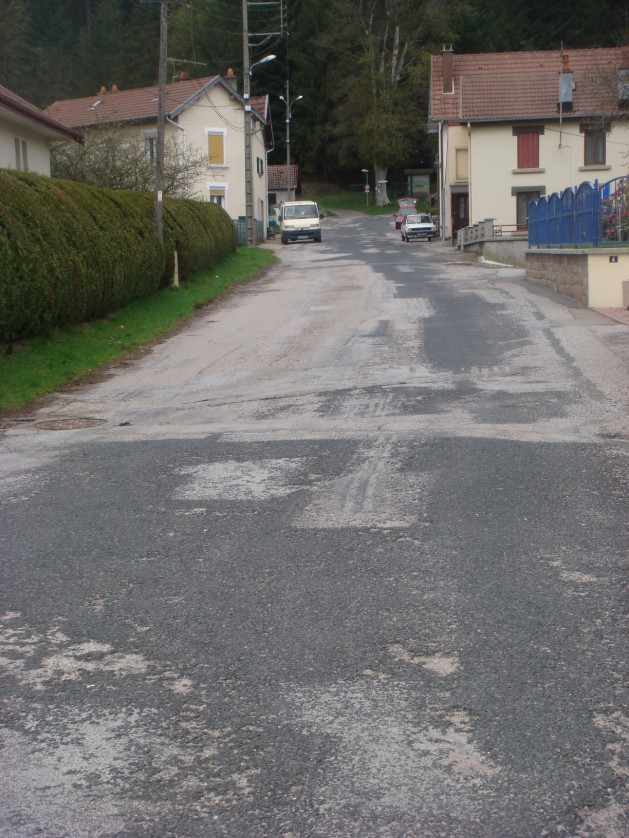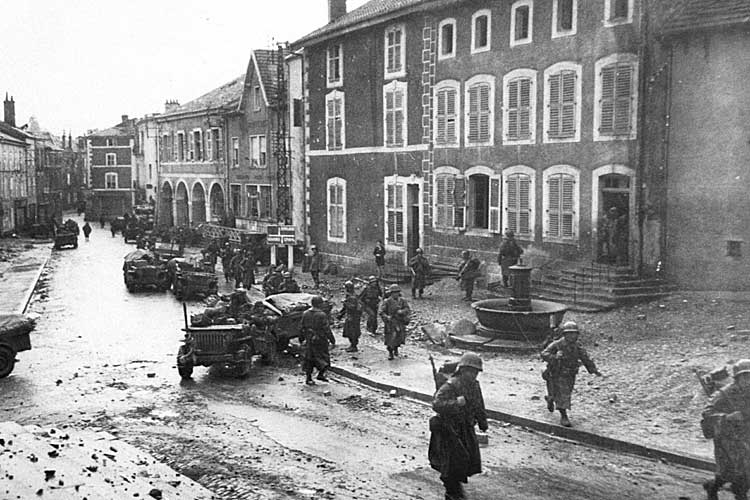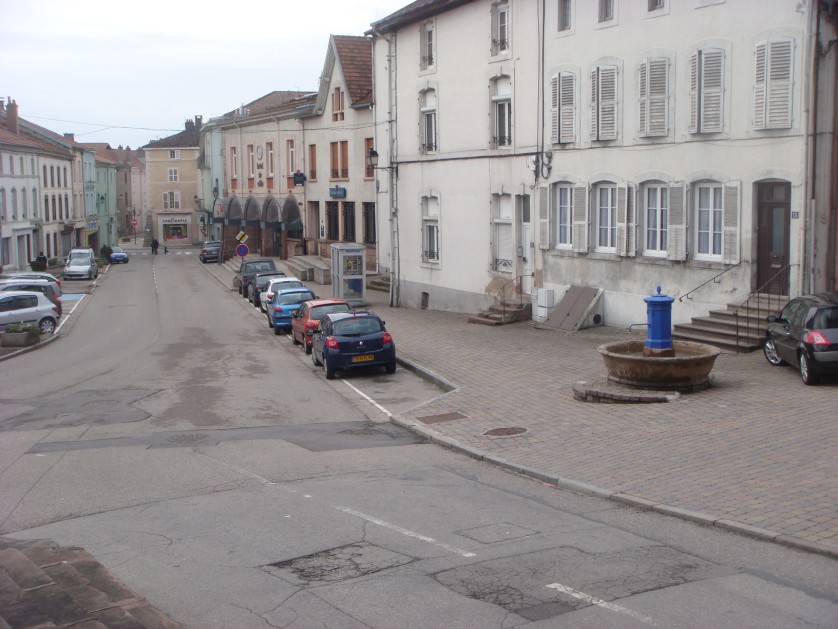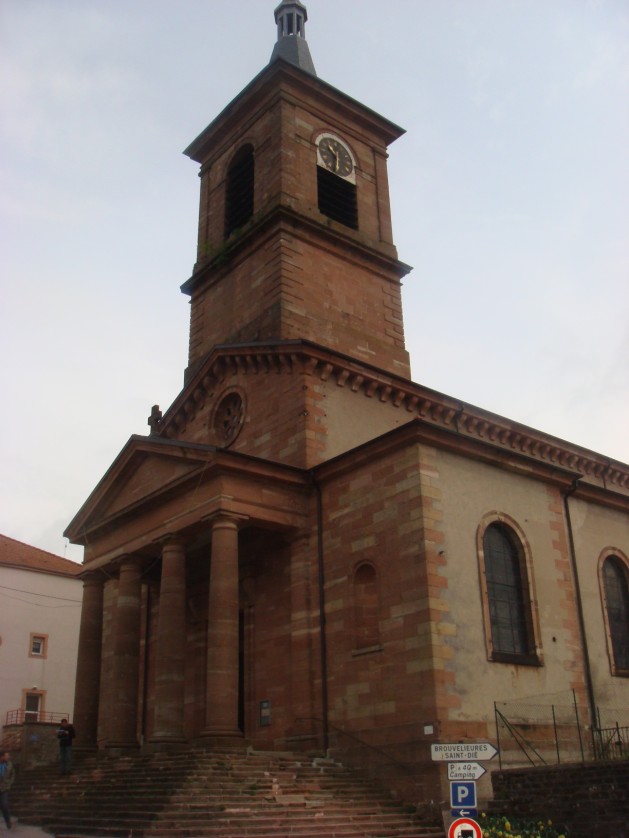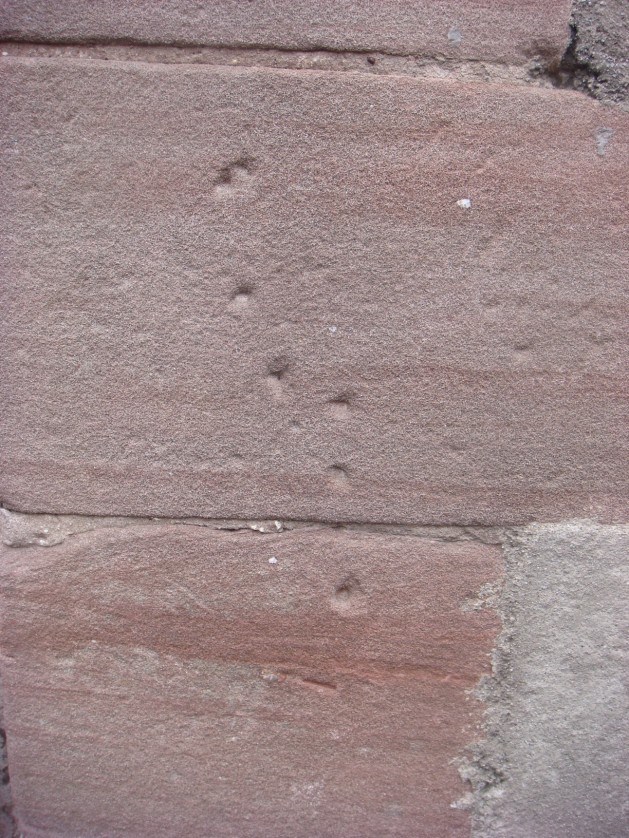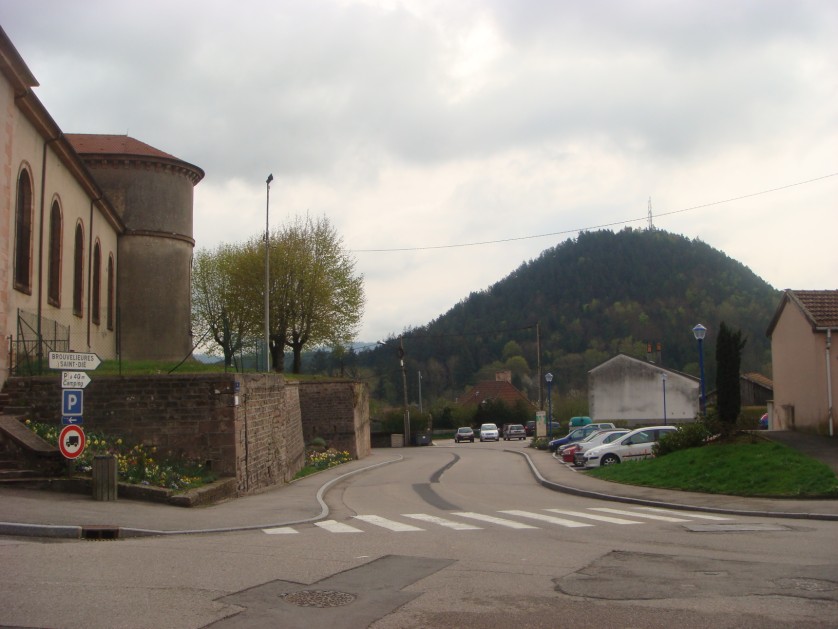
+- Forums (http://www.6thcorpscombatengineers.com/forumnew)
+-- Forum: World War II (http://www.6thcorpscombatengineers.com/forumnew/forumdisplay.php?fid=43)
+--- Forum: OTHER WWII UNIT STORIES AND INFO (http://www.6thcorpscombatengineers.com/forumnew/forumdisplay.php?fid=8)
+--- Thread: Stand where they fought tour - The Battle in the Vosges 1944 (/showthread.php?tid=2796)
Stand where they fought tour - The Battle in the Vosges 1944 - Juerg - 04-21-2009
Postion of the German Grenadier Regiment 736 at the start of Hill A
Stand where they fought tour - The Battle in the Vosges 1944 - Juerg - 04-21-2009
By noon of the 17th , the 100th Btl had advanced as far as the first of four conical hills that towered over Bruyeres. The 2nd Btl on the right kept pace, driving back two determined counterattacks and launching an attack on Hill "B," second of the four hills. Meanwhile, the 3rd Btl swung quietly into position on the right of the 2nd Btl on the night of the 17th. The photos shows Hill B, once from Hill D and the photo below has been taken near the old Chruch of Bruyere.
Stand where they fought tour - The Battle in the Vosges 1944 - Juerg - 04-21-2009
The following morning, all three battalions mounted a battering-ram attack behind a screen of fire from the 522nd Field Artillery Btl and other elements of division artillery.
Hill "A" fell to the 100th Btl at 1400 hours on October 18 1944, yielding more than 30 prisoners, and by the end of the day, Hill "B" had fallen to the combined efforts of the 2nd and 3rd Btl.
Stand where they fought tour - The Battle in the Vosges 1944 - Juerg - 04-21-2009
The former foxholes of the Germans Grenadiers can still be seen today.
Stand where they fought tour - The Battle in the Vosges 1944 - Juerg - 04-21-2009
L Company of the 3rd Btl had also pushed into the north end of Bruyeres and was proceeding to a linkup with the 143rd Infantry, which had attacked the town from the south, but the Germans still held hills "C" and "D". Bruyères had fallen! Only on Stanislas Square did a group of die hard defenders hold out until midnight. The last big explosions came when Capt. Pershing Nakada’s 232rd Engineer Company blew up the concrete barricades around the town hall. The photo shows the road were the Americans first entered Bruyere.
Stand where they fought tour - The Battle in the Vosges 1944 - Juerg - 04-21-2009
This is Bruyere on October 18, 1944
Stand where they fought tour - The Battle in the Vosges 1944 - Juerg - 04-21-2009
This is Bruyere on April 18, 2009! As you can see not much has been changed.
Stand where they fought tour - The Battle in the Vosges 1944 - Juerg - 04-21-2009
The church of Bruyere
Stand where they fought tour - The Battle in the Vosges 1944 - Juerg - 04-21-2009
Bullet holes in the church wall.
Stand where they fought tour - The Battle in the Vosges 1944 - Juerg - 04-21-2009
With Bruyères in American hands, the next objective was Hill "D" east of town. The attack was launched at 1000 hours on October 19.
Hill "D" fell to the 3rd Btl around noon on the 19th October, and Hill "C," now somewhat in the rear of both the 2nd and 3rd Btl had now developed into a bedlam, with large pockets of enemy troops (left on Hill "D" and by-passed in the attack) opening fire on the reserve companies and command posts.
During the fight to take Hill "D", F Company was trying to dislodge a German company that had infiltrated Hill "D" during the night. The battle was at deadlock when the Germans wounded Tsg. Abraham Ohama from F Company, disregarding his white flag while on the way to aid a fellow soldier. As the litter bearers tried to get to both of them, the Germans ignored the men with the Red Cross helmets and opened up on them, wounding the medics and killing Ohama. Infuriated that the enemy shot an unarmed, wounded man, the F Company men charged up the hill and annihilated the Germans. Those soldiers attacked with such ferocity that soon more than fifty German Grenadiers lay dead and seven survived only by hiding until the following morning. This was later called the "Banzai charge".
The Battle for Bruyères is considered one of the ten worst disasters in the history of the US Armed Forces.
